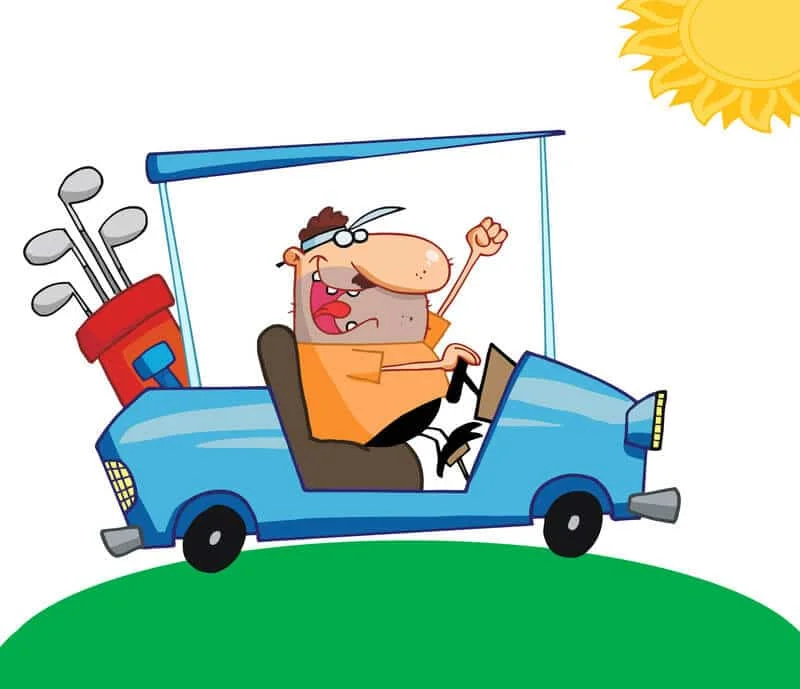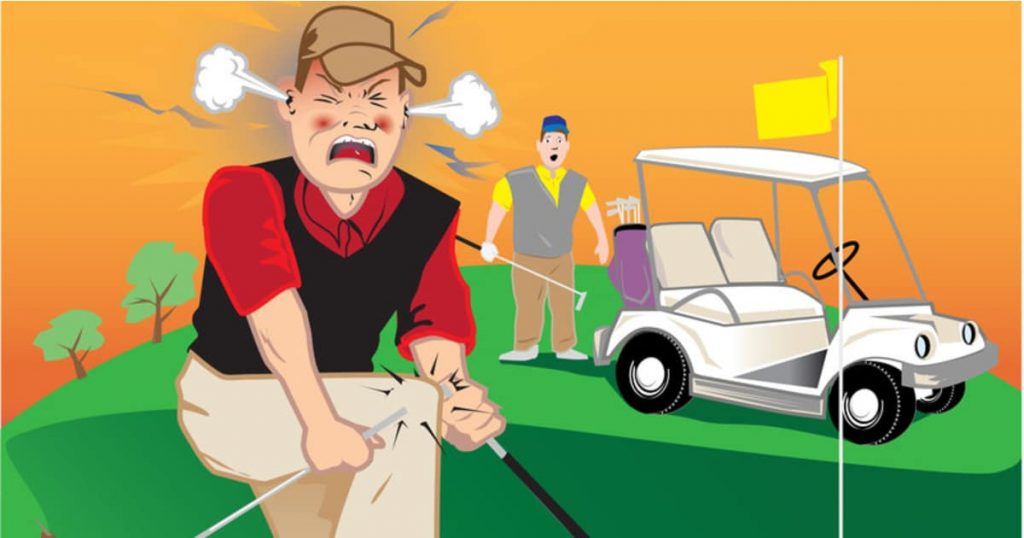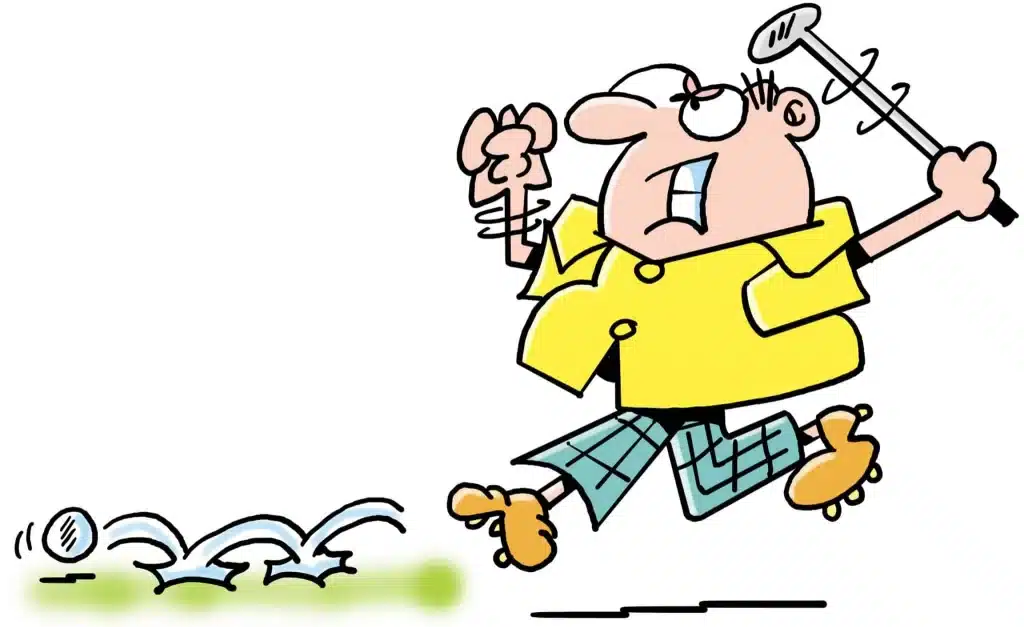Grip your club the right way for better performance
Knowing how to grip your club properly is a golfing must. Without a good grip, how can you swing the club properly?
The two types of golf grips and their variations
In golf, there are two types of grips and their variations: the digital grip (interlock, baseball or overlap), used for all techniques except putting, and the palm grip (Vardon, reverse, claw, etc.), used for putting. This article focuses exclusively on the digital grip.
But why so many variations? It’s a matter of personal preference, but also of adapting to the shape of your hands and your natural swing mechanics. Your grip therefore influences your swing. That’s why it’s worth paying a lot of attention to it if you’re new to golf. First, I will help you choose the grip that suits you best. Second, I’ll help you master the grip you choose.
Laterality in golf: which side will you play on
Since you will need either left- or right-handed equipment, you need to choose which side you will play golf on. To do this, I strongly urge you to read the article Left or Right? Also, the side you will be playing golf on determines whether your right hand or, conversely, your left hand will be the lower of the two on the handle.
Setting up properly before swinging and the art of a good golf grip
If you don’t take the time to properly set up and grip your clubs with the grip variation that best suits your hand characteristics every time you get ready to execute a golf shot, you’ll need untold luck to succeed at golf. You won’t be able to develop muscle memory for the swing because your swing mechanics will change from time to time. The golf swing, whether it is a putt or any other technique, is a reflex that is built by repeating the same actions. If your address setup and grip fluctuate, your swing will also fluctuate, as will the quality of the impact. As a result, you won’t be able to develop the right reflexes or predict how far your ball will travel: pretty embarrassing for a golfer, right?
Which variant of the digital grip is best for you?
1- The interlock grip
The interlock grip (Jack Nicklaus, Tiger Woods, Michelle Wie, Jordan Spieth, Rory McIlroy, Rickie Fowler) is an in-between between the baseball grip and the overlap grip. It is the most common grip in golf. The little finger of the trail hand is crossed between the index and middle fingers of the lead hand. The interlock grip reduces the pronation of the lead hand on the backswing, resulting in a squarer blade with the plane (Michael Breed).
2 – The baseball grip
The baseball grip (no crossing or overlapping of fingers between the two hands) is well suited for children, the elderly, women and people with short fingers as well as people with finger pain (arthritis). The baseball grip allows for more whip, more follow-through of the ball, therefore more distance. Make sure kids have their hands together, as 90% of them spread their hands a lot at first, as if it were a hockey stick, which it obviously is not.
3 – The overlap grip
The overlap grip (little finger of the lower hand overlapped between the index and middle finger of the upper hand) works well for people with long fingers and whose trail hand is too active. You can even have two fingers overlap the lead hand like Jim Furyk. An overlap grip accentuates the pronation of the lead hand on the backswing, resulting in a more inward opening of the blade and, by mirror effect, a closing of the blade on the downswing with draw and hook (Michael Breed).
There are other types of digital grips that are much rarer, but I think it’s best to adopt one of the three types above.
I recommend reading the article 10 mistakes to avoid as you get into golf.
Strong, weak or neutral grip?
The two hands should never contradict each other (trail hand stronger or weaker than the lead hand) according to Corey Pavin. However, the idea of a strong, weak or neutral grip has nothing to do with the relative strength of each hand. A strong grip is simply a grip where the hands are turned away from the target on the club handle. Conversely, you must turn your hands toward the target on the handle to have a weak grip. Therefore, the neutral grip is somewhere between these two extremes. I recommend a weak grip for the short game (putt, chip and pitch) but a neutral or strong grip for other techniques (half swing and tee shot).
Hand pressure on the handle
Hand pressure on the handle should be enveloping but relaxed (the veins in the forearms should not swell). To achieve a relaxed grip, first relax the neck and shoulders. The pressure of the hands on the club should be equivalent to the pressure you put on a full tube of toothpaste to fill your toothbrush.
If you can “waggle” in front of you and feel the heavy blade or bring the club directly behind you with minimal pressure, you have the right pressure. However, be sure to have consistent pressure (not releasing pressure at the top or at impact). According to Charlie Rymer, you can have a firm grip if the pressure is constant throughout the swing, because there is nothing worse than varying the pressure during the swing. This deflects the blade.
In my opinion, the handle should be tightened slightly for a putt to keep the blade stable, and the handle should be tightened more for a chip to keep the blade from deflecting on a fat shot. This is also true for a long grass shot. However, a normal, relaxed grip is needed for approaches, fairway shots and tee shots.
Increase the pressure on the handle slightly for shots into the long grass and bunkers (Lee Janzen).
Two “golfer’s bumps,” one “trigger”
Don’t forget the “golfer’s bump” between the thumbs and their index. The golfer’s bump is a muscle that forms a bump when the thumb is pressed strongly against the index finger of the same hand. So we have two golfer’s bumps, one per hand.
The “trigger” is the index finger of the trail hand slightly away from the middle finger. The trigger promotes better support at the transition.
The “sixth finger”
Placed on top of the handle, the pad of the little finger of the lead hand (this is the ulna end of the forearm) acts as a sixth finger and allows for a solid but relaxed grip.
Conclusion
Having a good golf grip lays the foundation for a good swing. Pay special attention to it when you first start out. And don’t be afraid to experiment and change your grip type if you have to. But don’t keep changing your grip or you’ll get confused.


